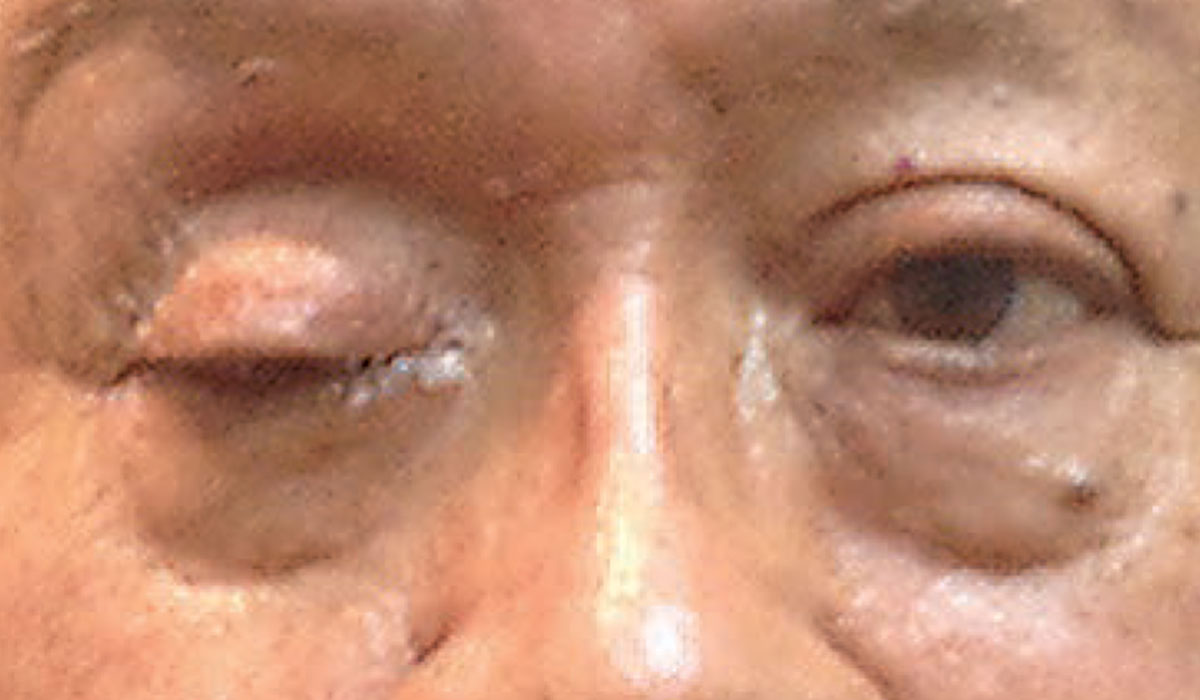 |
| Post-PPV patients are at greater risk for ptosis. Photo: Michael Trottini, OD. |
Up to one-third of patients who undergo intraocular surgery can develop ptosis following the procedure. In most cases, the condition improves on its own within one to three months and requires no clinical intervention. However, researchers recently hypothesized that patients who undergo longer and more invasive intraocular procedures, such as pars plana vitrectomy (PPV), may be more likely to develop persistent postoperative ptosis.
A total of 57 patients (60 eyelids) with PPV recruited from a university hospital were included in this prospective study. Eyelid parameters were measured 24 hours before surgery, as well as during follow-up at both one and six months post-op. Measured eyelid parameters included margin reflex distance 1 (MRD1) and 2 (MRD2), levator function and eyelid creases. The researchers defined clinical and clinically significant ptosis as ≥0.5mm and ≥2mm drop of MRD1, respectively.
The findings showed clinical postoperative ptosis in 57% of eyelids at one month post-op and in 47% at six months post-op. Clinically significant postoperative ptosis was observed in 21% and 11% at one and six months, respectively. The researchers noted that this frequency is in the range of trabeculectomy surgery but is markedly higher than cataract patients, in which roughly only 3% to 4% of patients experience clinically significant persistent ptosis lasting longer than six months. However, no one variable could be associated with the study’s findings.
“None of the variables (age, sex, previous intraocular surgery, diabetes, surgeon’s level, duration of surgery, simultaneous phacoemulsification, type of anesthesia, subconjunctival injection and duration of postoperative steroid use, as well as preoperative MRD1, levator function and crease height) were significantly associated with clinically significant ptosis in either follow-up times,” the study authors noted in their paper. They did speculate about why PPV may lead to a higher frequency of persistent ptosis than most other intraocular surgeries.
“PPV is associated with a longer duration of procedure, higher number of incisions, more intraocular globe rotation and movement and more severe and longer postoperative inflammation than cataract surgery,” the authors explained. “All the factors could lead to a levator dehiscence type of ptosis. A significant increase of mean eyelid crease height from 9.4mm to 10.5mm in the first and 9.8mm in the last follow-up could imply a levator dehiscence mechanism.”
Despite this study’s small sample size, the observations are consistent with similar findings in the literature, the authors argue. These findings suggest there could be a link between the invasiveness of the intraocular procedure and the likelihood of a patient developing persistent ptosis postoperatively. Fortunately, the data still supports the notion that the majority of patients improve within a few months.
Abdolalizadeh P, Kashkouli MB, Falavarjani KG, et al. Postoperative blepharoptosis after pars plana vitrectomy procedure. Ophthalmic Plast Reconstr Surg. 2021;37(5):431-4. |


